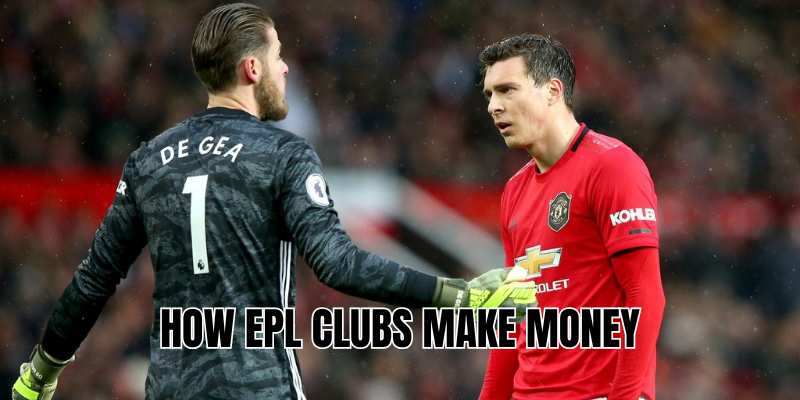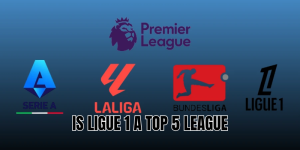When you ask how EPL clubs make money, you’re really tapping into a multi-billion-pound business split across several big revenue streams. In this article, MatsuGoal will guide you through the main ways Premier League teams generate income, what’s growing fastest, and how big clubs balance profit (or loss) with ambition.
Revenue pillars of Premier League clubs
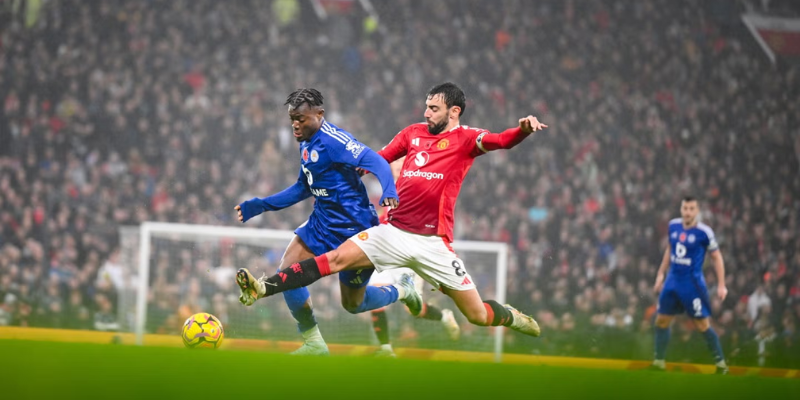
EPL clubs rely on three main income sources, plus a few extras. Each has its own risks and rewards, and together they make up the financial backbone of England’s top flight.
1. Broadcast rights
- The Premier League sells domestic and international television rights as one of its biggest money-makers. These are negotiated centrally for multi-year cycles. Recent cycles have seen international rights grow significantly, in some cases surpassing the value of domestic TV deals.
- Then the revenues from these deals are distributed among the 20 EPL clubs, and facility/live-match fees. Clubs that perform better or have more games televised get more.
2. Matchday income
- This is revenue from home games: ticket sales (regular and premium/VIP), hospitality, food & drink inside stadiums, merchandise on matchdays, and sometimes stadium tours.
- Matchday income has grown, partly because clubs raising ticket prices, filling larger stadiums, increasing season ticket/membership sales, and offering premium seating or matchday experiences.
3. Commercial activities
- Sponsorships (shirt sponsors, sleeve sponsors, official partners), licensing, and merchandise (retail, apparel) are a huge part of revenue. Big clubs with global fanbases can sell many kits, licensing deals, and strike sponsorships with big brands.
- Commercial revenue is the fastest growing stream for many clubs. New partnerships, premium branding, and international markets all help.
Other sources and financial levers
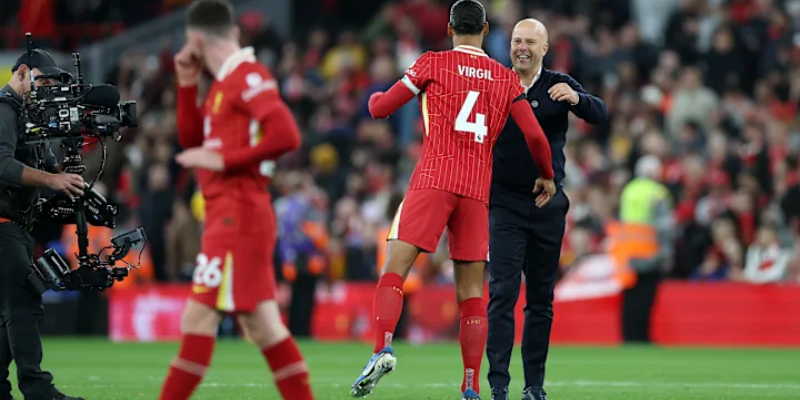
Beyond the big three, clubs often tap into additional income or use strategies to improve profitability.
- Player trading: Buying low, selling high. Clubs develop youth players or buy promising talent and later sell for profit. This can balance out deficits.
- Prize money:, cups (FA Cup, League Cup), and European competitions (Champions League, Europa League). Success on the pitch boosts this significantly.
- Central commercial deals: Some deals are negotiated via the Premier League itself (league-wide sponsorships, etc.), which are distributed to all clubs.
- Non-matchday events: Stadium usage for concerts, conferences, corporate events can generate non-football income.
- Retail & merchandise licensing: Official club stores (online and physical), licensing deals for products, and replica kits. Big clubs generate tens of millions in “kit & apparel” alone.
Recent figures & trends (2023-24 / 2024-25)
To understand what’s happening now, here’s how some of those streams have been evolving:
- Total combined revenue for all Premier League clubs in 2023-24 was about £6.3 billion, up a few percent year-on-year. Commercial and matchday revenues both saw growth.
- Commercial revenue alone crossed £2 billion aggregate for the first time. e Italia)
- Matchday revenue passed £900 million in the same period, driven by more home games in European competitions, increased ticket prices, and stadium capacities.
- Broadcast revenue was relatively flat for some clubs, especially those not in the top European competitions. For example, Manchester United saw a drop in broadcast revenue when they were out of the Champions League.
Challenges and what differentiates clubs
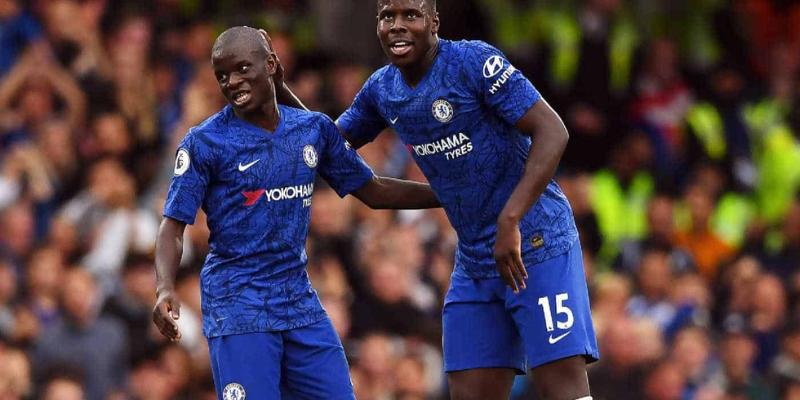
Making money is one thing; keeping costs under control and sustaining growth is another. Here are some of the key challenges and what sets the more successful clubs apart.
- Wage bills and general costs are huge. Many clubs spend more on salaries and staff than they bring in.
- Dependence on Champions League / European success for added TV, prize-money, and matchday gains. Missing out can cause a big drop in revenue.
- Fan expectations vs profitability: Fans want big players, trophies, investment; but this often increases costs. So the balance is fragile.
- Infrastructure investment (stadiums, training centres) requires big upfront costs but can yield long-term returns, non-matchday revenue.
- Commercial globalization: Brands and merchandise across the world are growing sources of income, but they come with time, investment, and marketing risks (counterfeits, licensing issues, delivery).
Case studies: Big clubs vs smaller clubs
To see how this plays out, here are contrasts between very large clubs and more modest ones.
- A top club like Manchester United recently reported record revenues of around £666.5 million in a season, even when missing out on Champions League, largely because of big commercial deals (sponsorship, merchandising) and strong matchday income.
- Liverpool, similarly, saw increases in matchday and commercial revenues, but still posted a pre-tax loss (~£57 million) because media revenue fell (due to missing Champions League) and costs rose significantly. uters.com)
- Smaller Premier League clubs depend much more on broadcast and central payments; they often don’t have the global brand, merchandising reach, or huge stadium capacities to generate commercial or matchday income at the same scale.
How the Premier League shares moneyng clubs
Because many resources come from league-wide deals, how the money is split matters a lot.
- The Premier League centralises negotiation of broadcast and commercial rights. When deals are made, that income is collected centrally.
- Clubs receive payments based on several criteria: equal share, number of live matches broadcast, and their league position (merit payments). So finishing higher brings extra.
- There are also solidarity payments to clubs outside Premier League (EFL etc.), and to support community programs. Some distribution is used to grow the wider football ecosystem.
Emerging trends likely to intensify
Looking ahead, several trends suggest how the financial landscape of EPL clubs might shift in the coming years.
- International broadcast deals are expected to keep growing, especially in Asia, the Middle East, and the Americas. EPL is increasingly global in consumption.
- Clubs are pushing more into direct-to-consumer content, digital media, and streaming platforms to control more of their media output.
- Sponsorships are diversifying. Sleeve sponsorships, non-traditional partners (crypto, tech, lifestyle) and location-based branding are becoming more common.
- Stadium improvements and redevelopments: expanding capacity, adding premium seating, improving fan experience to capture more matchday revenue.
- Cost control is under increasing pressure.
Conclusion
How EPL clubs make money comes down to a smart mix of broadcast deals, matchday revenue, and commercial income, backed by prize money and player trading. While big clubs with global brands can earn huge sums.
me to pull up revenue breakdowns for your favorite club or compare two teams? Just name them, and MatsuGoal will get the numbers.

